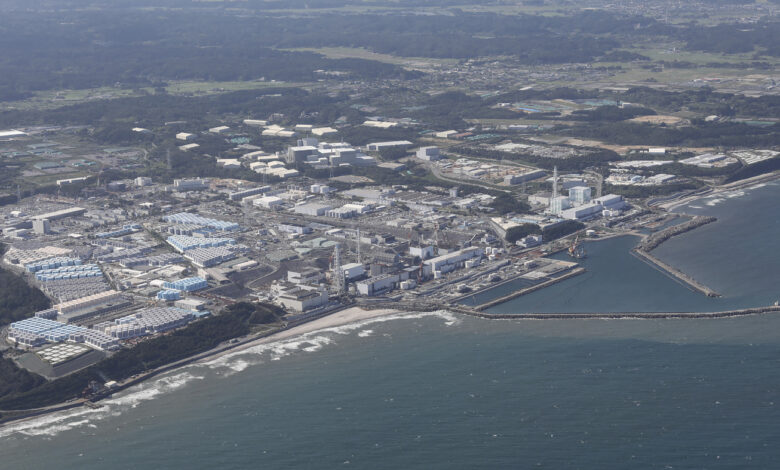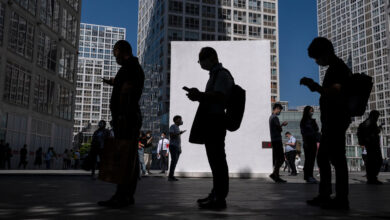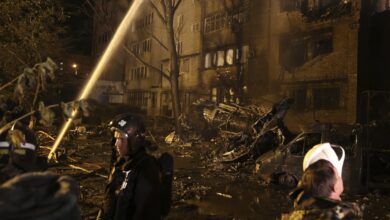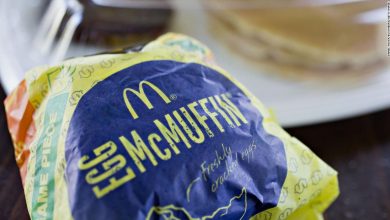Japan begins releasing water from Fukushima into the Pacific Ocean : NPR


This aerial picture shows tanks used for storing treated water at the crippled Fukushima nuclear power plant. Japan began releasing wastewater from the plant into the Pacific Ocean on Thursday despite angry opposition from China and local fishermen.
Jiji Press/AFP via Getty Images
hide caption
toggle caption
Jiji Press/AFP via Getty Images

This aerial picture shows tanks used for storing treated water at the crippled Fukushima nuclear power plant. Japan began releasing wastewater from the plant into the Pacific Ocean on Thursday despite angry opposition from China and local fishermen.
Jiji Press/AFP via Getty Images
FUKUSHIMA, Japan — Japan began releasing water from its crippled Fukushima nuclear plant into the Pacific Ocean Thursday over the objections of local fishermen and the government of neighboring China.
The move has led to criticism, particularly from fishermen, that the decision to release the water was made without enough public debate and input from Japan’s northeast Tohoku region, despite its outsize contribution to the capital’s supply of labor, seafood and energy.
China announced it is expanding an existing ban on seafood imports from Fukushima to include all of Japan, citing health concerns.
Just as some of the more than 1 million tons of water began to flow through an underwater tunnel into the ocean, fishermen auctioned off their catch in the port of Tsurushihama, about 40 miles north of the Fukushima plant.
Fukushima is known for its seafood, which fetches good prices at Tokyo’s famous Tsukiji fish market. Fisherman Haruo Ono says prices for local fish had gradually climbed back to their highest level since the 2011 earthquake and tsunami, which caused meltdowns at the Fukushima nuclear plant.
Ono now worries that prices will tumble. He blames the Japanese government for abandoning Fukushima’s fishermen, and he and his colleagues are suing the government to stop the release of the treated radioactive water.
“Fukushima folks didn’t do anything wrong,” he comments, sitting on a pier near his fishing boat. “It was the government that came here and built the nuclear plant,” he adds. “Who uses the electricity? Tokyo!”
Before announcing the water discharge, Prime Minister Fumio Kishida tried to show he had won over the country’s fishermen. The government will earmark funds to rebut disinformation about their products, and purchase seafood they can’t sell.
“We’ll continue taking necessary measures,” Kishida told fisheries fisheries representatives, “to ensure fisherfolk can continue their activities with peace of mind, and we pledge to continue doing so even if the water release takes a long time.”
Both the decommissioning of the damaged nuclear plant and the release of the water are expected to take decades.
The Japanese government says it’s making the wastewater safe in part by diluting it with seawater and releasing it very slowly. The International Atomic Energy Agency has approved the plan and said it is consistent with international safety standards. The agency plans to conduct independent monitoring to make sure the discharge is done safely.
Fukushima’s dilemma has in part to do with its geography. Kunpei Hayashi, an agriculture expert at Fukushima University, says that in preindustrial times, Fukushima locals would head to Tokyo to find work in winter, as there wasn’t much to do at home.
A change in the local mindset
Since the Fukushima nuclear plant was built in 1967, Hayashi says the local economy became reliant on it and on the government subsidies it brought. He is hopeful that Fukushima residents will reconsider their choices and raise their voices.
“Should we rebuild our economy to make the most of our local environment,” he asks. “Or can’t we speak up against the people of Tokyo yet?”
The government has made some efforts to remake Fukushima’s landscape and guard against future quakes and tsunamis. Seawalls have arisen along the coast, and buildings have been moved back from the shore.
But the biggest changes, says supermarket owner Takashi Nakajima, are in people’s mindsets.
“For the first time, we were forced to think that the life we’ve lived since the time of our ancestors could easily be destroyed or changed. It makes us feel a kind of impermanence,” he says. “Our trust and happiness in relying on our hometown has been destroyed.”
Nakajima and thousands of other plaintiffs sued the government, accusing them of responsibility for the nuclear disaster. A local court ruled in 2020 that scientists had warned the government that a major tsunami could strike the nuclear plant, but the government took no action. But the government appealed the loss to the supreme court and won.
Questions about the safety of the seafood
Nakajima says that despite the government’s assurances, locals don’t really have enough information to decide whether the water discharge is safe or not.
A recent Kyodo News Agency poll found that 44% of Japanese are unsure whether to support or oppose the release. Eighty-two percent say the government hasn’t done enough to explain it.
Housewife Mieko Orikasa bypasses plates of bonito and tuna in the sashimi section of Nakajima’s store. Asked whether she trusts the government’s reassurances about the safety of local seafood she replies: “I have no way to find out myself.”
She adds: “I have a 3-year-old grandchild living in Tokyo, and a second grandchild due to be born in December. When they come to visit, I have to reconsider whether I can let them eat fish or not.”
Chie Kobayashi contributed to this report in Fukushima.








